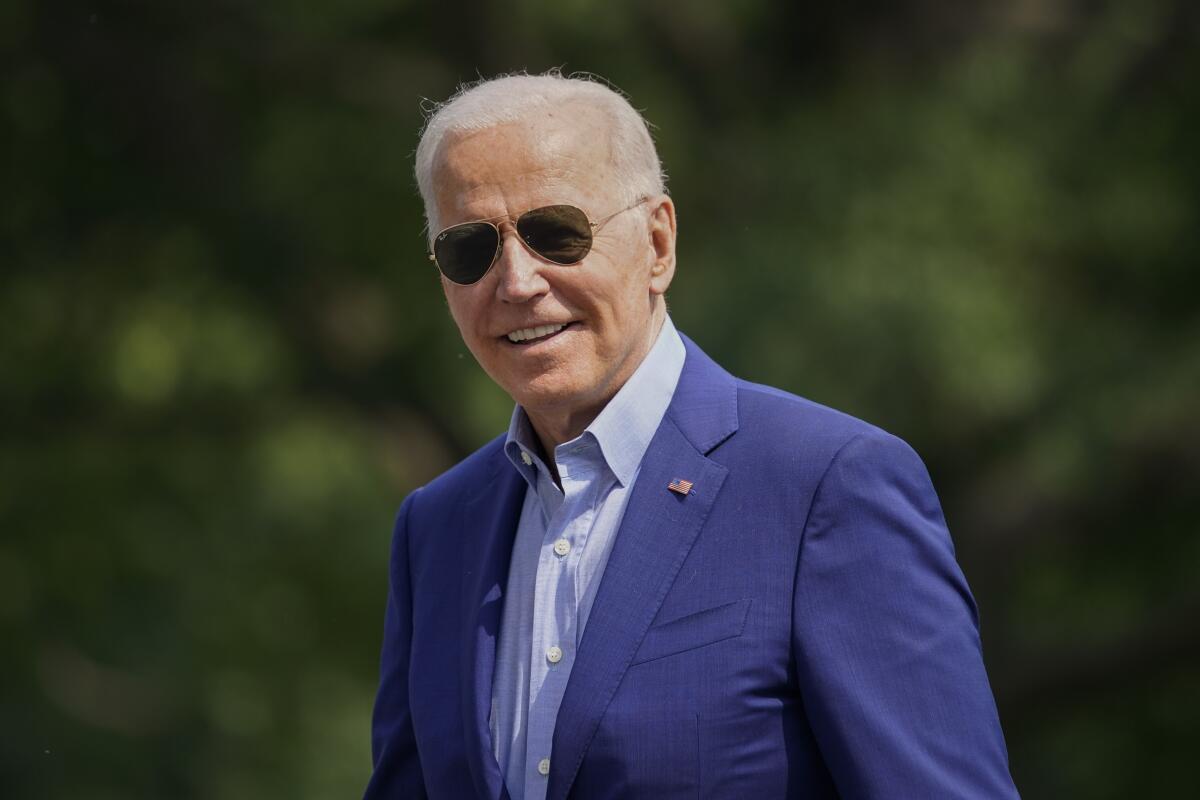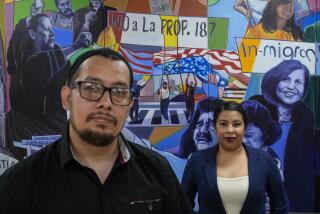Employers of foreign workers would pay more under Biden proposal

The Biden administration on Tuesday proposed to dramatically increase fees for many employment-based visas while keeping prices for people applying to become U.S. citizens relatively static.
The proposal would push more of the cost of funding the agency that oversees the nation’s immigration system onto companies that employ foreign workers and ensure that asylum seekers continue to pay nothing to apply for protections in the United States.
The plan, which also includes new fee exemptions for victims of human trafficking and other crimes, reflects the administration’s values, said Julia Gelatt, a senior policy analyst at the Migration Policy Institute.
Keeping fees for poor applicants at zero and fees for humanitarian visas and new citizens low indicates that “the administration is committed to facilitating legal pathways for migrants and eliminating barriers to immigration and citizenship, particularly for vulnerable migrants,” Gelatt said.
Putting the burden of the largest fee increases on sponsors of temporary workers, by contrast, shows “the administration’s mixed feelings about the value of temporary work visas,” she added.
U.S. Citizenship and Immigration Services, which is primarily funded by immigration-form fees, formalized the plan by issuing a proposed rule Tuesday. The agency is required to review its fee structure every two years, but new fees haven’t been added since 2016, during the Obama administration.
“We have to run based on whatever comes in the door through our fees,” USCIS Director Ur Jaddou said in an interview with The Times. “We are now going on our seventh year without a fee increase, which is a long time, and a lot has changed since then.”
The Trump administration tried to raise certain fees but was met with criticism from immigrant advocates and some politicians.
President Trump wanted to dramatically increase prices for naturalization and would have sought, for the first time ever, $50 from each person seeking asylum. The Trump proposal would have also ended many fee waivers for low-income applicants.
A federal court blocked the Trump plan in 2020.
“This rule shows a drastically different approach than the fee schedule proposed under President Trump,” Gelatt said. “His administration would have eliminated fee waivers, except where required by law; greatly raised the fees for naturalization applications; and imposed a first-ever fee on applications for asylum. In contrast, the Biden administration is proposing to codify current fee waivers and exempt more categories of humanitarian applicants from fees.”
Still, the rule proposed by the Biden administration includes several price increases, and the fees for many common forms are higher than they were in the Trump proposal, Gelatt said.
The costs for applying to turn a temporary visa into permanent residency — also known as a green card — would increase. Individuals who seek only to adjust their status would pay an application fee of $1,540, up from $1,225, and those wanting to apply to travel and work while they wait would pay $2,820.
Currently, immigrants pay one lump fee. The administration is trying to return to a previous policy that allowed people to pay for certain benefits, such as traveling or working while waiting for permanent residency.
People who apply for EB-5 visas, which are available to those who invest large sums of money in the U.S., would face massive price increases as well. Application fees for these visas would jump from $3,675 to $11,160, an increase the agency believes is necessary to pay for the extra time it takes to process them.
Extra funds are also needed for USCIS to fully implement changes the Biden administration hopes to make to asylum processing at the border. The administration wants asylum officers to be able to grant or deny asylum to migrants, a power previously reserved only for immigration judges. The Biden administration proposal attempts to pay for the asylum processing changes through additional fees — $600 on top of the price to process the forms — for employers seeking visas for specialized workers.
“We wanted to ensure that we weren’t passing on the cost to people who could least afford it,” said Jaddou.
Fees for the popular H-1B program, which allows employers to apply to hire foreign workers in specialized occupations, would also go up. Although major tech companies frequently use the program, universities and smaller companies also hire H-1B workers.
The main application fee associated with the program would go from $460 to $780, for a total of $1,380 once the $600 asylum fee is included. The fee associated with registering for the H-1B program would jump from $10 to $215, but that increase is not associated with subsidizing the asylum program. Fees for the H-2A program, which allows agricultural companies to bring workers to the country, would also increase.
An application fee for companies trying to transfer executives or managers from their offices abroad to the U.S. with an L visa would jump from $460 to $1,385 — or $1,985 with the asylum fee.
Employers already pay other additional fees to petition USCIS for H or L visa workers. For example, companies applying for H-1B workers in most cases must pay a $500 fraud detection fee — separate from the application fee.
U.S. officials wanted to keep prices for naturalization as low as possible, however. The cost of applying for naturalization would be $760 under the proposal, up from $725.
“We held down the cost despite the fact that the adjudication of naturalizations costs the agency more than what is in the fee at this time and what it would be in the future,” Jaddou said. “We believe that citizenship is not just a value to the individual who received citizenship, it is a value to the country as a whole to get people fully integrated into our society by becoming full and participating members of our nation.”
USCIS naturalized more immigrants during the last fiscal year than it has in more than a decade, according to a recent report released by the agency.
More than 1 million immigrants became U.S. citizens in 2022.
The proposed rule offers a 60-day window for members of the public to offer comments, criticism and suggestions for the agency to review.
After the comments are taken in and considered, USCIS would issue a final rule for implementation. The final rule could change depending on this process.
More to Read
Get the L.A. Times Politics newsletter
Deeply reported insights into legislation, politics and policy from Sacramento, Washington and beyond. In your inbox three times per week.
You may occasionally receive promotional content from the Los Angeles Times.











